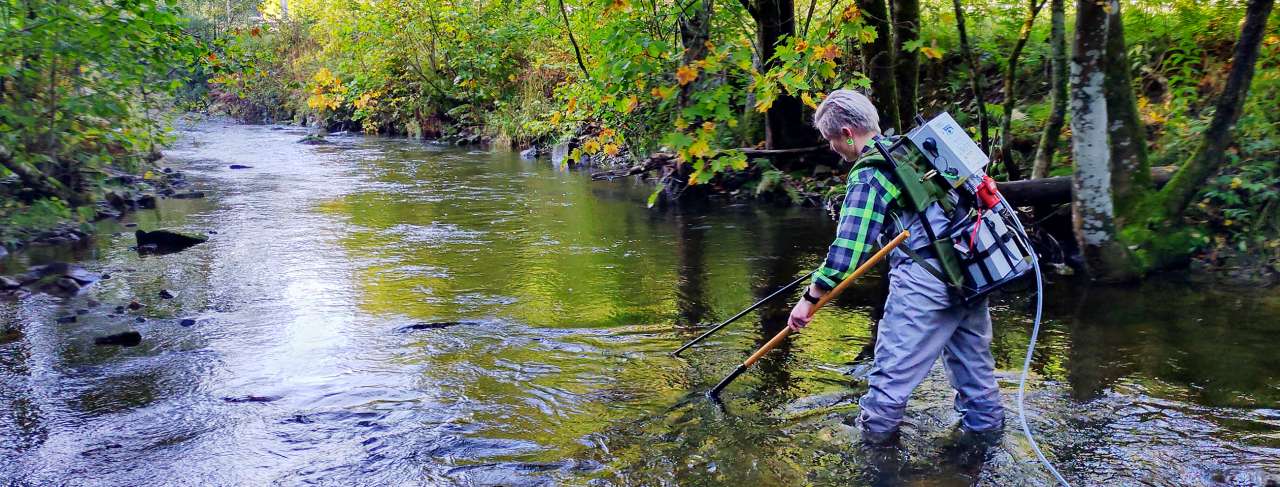Fish thrive despite road work

Photo: Roger Roseth
Fish monitoring in surveyed streams during the construction phase of several major road construction projects shows good production of both sea trout and salmon.
Researchers at NIBIO have been monitoring sea trout and salmon in waterways affected by major infrastructure projects for several years, including along the E18 route Langangen-Rugtvedt. The goal has been to see how fish populations and bottom-dwelling organisms are affected by particle and nitrogen emissions during construction activities.
"The fish have managed surprisingly well, even though the water quality has been poor at times. In some places, the fish population has even increased," says Roger Roseth, senior researcher at NIBIO.
One possible explanation is that turbid water reduces predation, as fish become less visible to predators. Low visibility means fish defend smaller territories, allowing greater density. When water is unclear, fish move more freely without fear of being caught.
Other species, such as the vulnerable freshwater mussel, also seem to tolerate the pressure better than expected. In large waterways such as the Åbyelva and Sogna, where particle and nitrogen concentrations are diluted, road construction has had few visible effects on the freshwater mussel. Some bottom-dwelling organisms, such as net-building caddisflies, may, however, face greater challenges, as particles from construction activities destroy their food webs.
When roads are completed, studies will assess long-term population effects. Roseth wants to see if predation increases when water clears and whether this reduces fish density. Future concerns when the new roads are in operation include runoff of metals, sulphate, microplastics, and road salt affecting water quality and wildlife.
Contacts

Purpose
Monitoring water environment in connection with road construction.
Collaboration: Faun and Naturplan
Funding: Statens vegvesen, Bane NOR, and Nye Veier/Eiffage
Contacts

